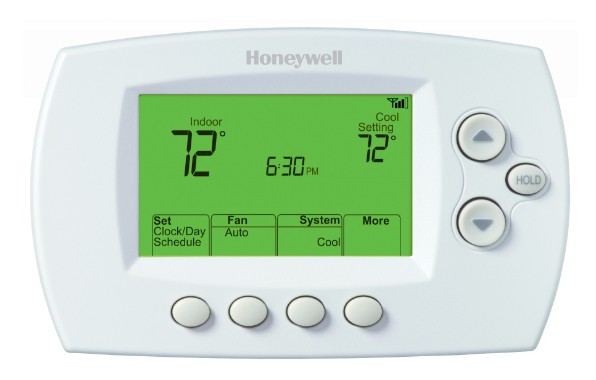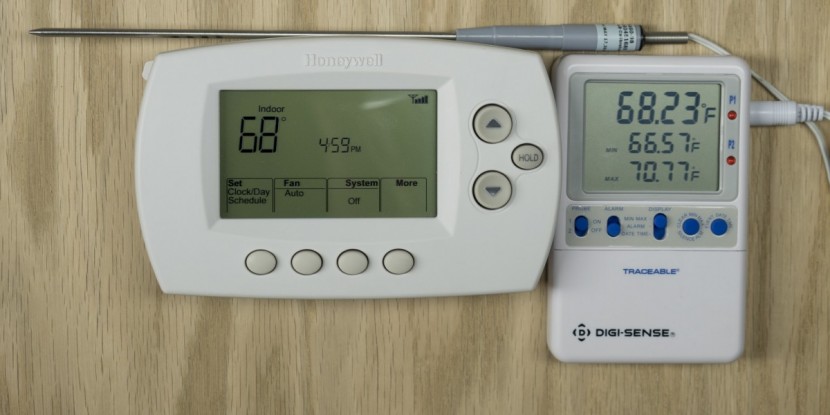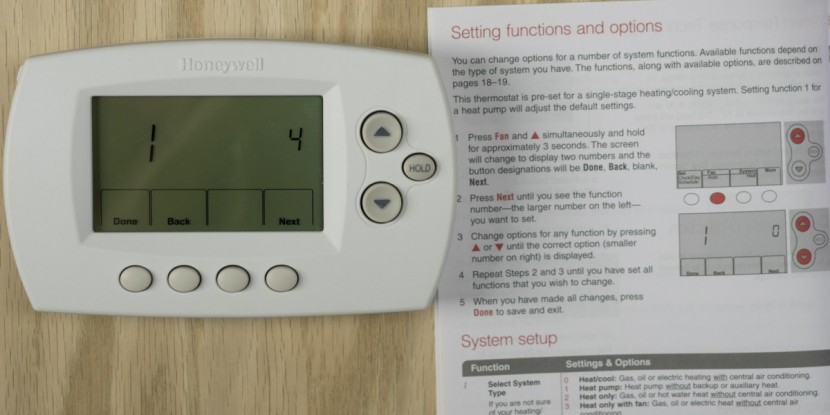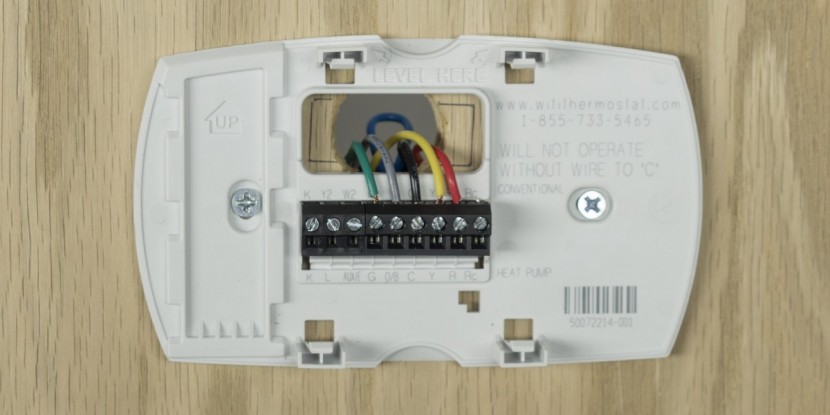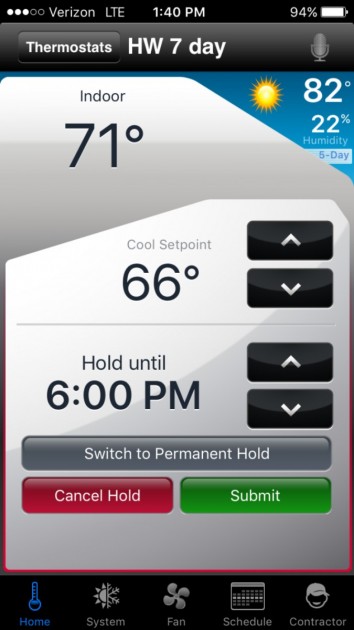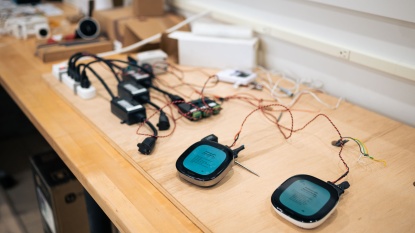Honeywell WiFi 7-Day Programmable Review
Our Verdict
Our Analysis and Test Results
Honeywell has been in the thermostat business for well over 60 years, with their most recognizable and iconic round T-86 model introduced in 1953. Having moved away from the round aesthetic, the 7-Day programmable follows the rectangular style that has become more commonplace, with the addition of remote connectivity. This product is bare-bones, performing well where it counts the most, and is one of the best models to select for those on a budget.
Ease of Use
This model is extremely similar to traditional programmable models — and is therefore plagued with similar difficulties when it comes to using them. After setting the date and time using the arrow keys., the screen flashes “WiFi Set-Up” with no clear indication of what to do next, definitely requiring us to consult the manual. Scheduling is identical to typical programmable models, meaning that it is relatively difficult to set-up.
This product allows you to set each day to a different schedule; hence the 7-day in its name, with a wake, leave, return, and sleep temperature. One feature we liked is that this device will start adjusting the temperature early, to ensure it is at the desired temperature when scheduled.
Changing the current temperature is easy enough, up arrow for warmer, down for cooler, which will also hold this new temperature until the next point in the schedule. Pressing the “Hold” button will indefinitely maintain this new temperature.
The display is plain and simple but has a much dimmer backlight than other models we looked at.
When it comes to changing advanced settings, it boils down to two simple questions: Are you extremely patient? Do you read the manual? If the answer to either of those is “no”, then you most likely will not be changing any advanced settings. On the plus side, there aren't many advanced settings to change, but those that you can, like manual to auto or multiple heating stages, require special combinations of buttons that can only be deduced through the manual.
We could not find any way to set maintenance reminders on the base or on the app.
Install & Support
Installation for these products should be an easy affair, lasting less than an hour. Unfortunately, in practice, this can be one of the most frustrating and infuriating parts of purchasing a new smart thermostat. We rated the ease of installation in multiple places, as well as the quality of customer support we received when asking questions of the manufacturers.
The Honeywell 7-Day was about average when it came to installation, keeping its trend of basically mirroring a traditional model with the addition of remote connectivity. This model, as well as the other Honeywell model we tested, did not come with a built-in level and also did not come with a screwdriver, requiring you to have access to these tools for a problem-free install.
When it came to supplied documentation for the install, we found it to be somewhat lacking, instructing us to locate an instructional video that we couldn't actually find. This issue may have been fixed by now, but at the time of our testing, we were limited to the written instructions only. This was the most difficult thermostat to install, but it still didn't take more than an hour to put in.
To evaluate the level of customer support Honeywell offered, we sent in an email stating that the existing thermostat had been removed, leaving only bare wires.
After waiting a full week with no response, we sent in a follow-up email and received a response within an hour. They gave the most detailed information, asking us to track down the wires at the furnace, and then gave specific instructions on where to connect what and what to do after we connected them, solving our problem within a few back and forth exchanges over email.We also contacted the customer service via phone to answer a different question. Many people that are lacking a “C”, or common wire may consider adding an external 24VAC transformer, and we were curious how one would go about hooking that up. We weren't on the phone for very long, and the representative was both knowledgeable and helpful.
It's a little more complicated to setup the WiFi on this device, and substantially less intuitive, requiring another consult to the manual.
Remote Access
Remote access is really where this product shines, setting it apart from its lookalike traditional models. Scheduling is fantastic through the remote interface, significantly better than on the device itself. There isn't really anything else you can change on the app besides the temperature and schedule, but it does display the current weather and the daily high and low temperature.
To adjust the current temperature, move to the desired page and adjust the temperature with arrow keys. We did like that the app required us to confirm adjustments and hit submit before it did anything, adding a little extra security to prevent accidental changes.
Accuracy
To test the accuracy of each thermostat, we compared the displayed temperature with a lab-grade thermometer multiple times throughout our testing, and tracked the differences. The 7-Day Programmable was one of the most accurate models that we reviewed, averaging within a half of a degree or so of the control thermometer.
Value
This thermostat is a great value, offering good performance for a price significantly less than its competitors. This is definitely one of the models to get if you are on a budget.
Conclusion
This is a simple, bare-bones model that performs well on a budget. We would recommend this to anyone who just wants a thermostat that they can remotely monitor. When used correctly per the recommended guidelines, you most likely will be able to save just as much money and be as energy-efficient as the fancier models, without emptying your wallet.


